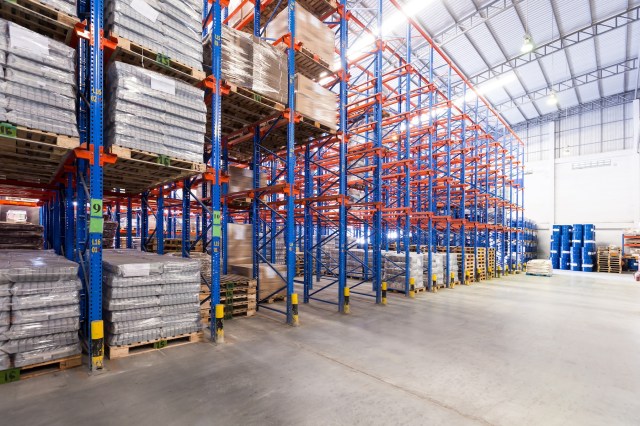Fulfillment Centers vs. Warehouses: How Do They Compare?

Many people use the terms “fulfillment center” and “warehouse” interchangeably. However, they’re actually two different types of logistics services. Knowing the difference between fulfillment centers and warehouses is critical if you’re looking for the right logistics partner. If you’re running one of the approximately 33.2 million small businesses in the United States and need to build the best possible supply chain, here’s what you need to know about the difference between fulfillment centers vs. warehouses.
What Is a Fulfillment Center?
A fulfillment center – which is also referred to as a distribution center or third-party logistics (3PL) – is a third-party service from which companies selling products can outsource their fulfillment. Essentially, when the company receives a customer order, information about the purchase is provided to the fulfillment center. This third-party provider then handles the picking, packaging, and shipping of the order.
With a fulfillment center, the third party is also handling other aspects of inventory management. For example, they provide the physical location for storing the products and maintain logs on inventory levels. Additionally, they often assist with customer returns.
What Is a Warehouse?
A warehouse is a physical location – typically a large, industrial-type structure – that functions as a storage facility. A company can send its inventory to the warehouse, and the warehouse will hold it for an open-ended amount of time, based on the nature of any contract in place.
Warehouses are often helpful for companies that do business in the form of large bulk orders. With those, orders aren’t necessarily processed by the warehouse directly. Instead, the warehouse functionally centralizes inventory, making it easier for small businesses to coordinate the sending of large-volume orders.
Additionally, small businesses that prefer to handle their own fulfillment may have their own warehouses. This allows them to store products and manage picking, packing, and shipping, all without the need for a third party.
How Do They Differ?
The primary difference between fulfillment centers and warehouses is that fulfillment centers handle order processing and shipping for individual customers. The partner usually provides picking, packing, kitting, and package shipping for the small business and may also assist with customer returns.
With a fulfillment center, outgoing orders can also start moving quickly. Most 3PLs usually have strong relationships with shipping companies, and pickups typically happen daily, if not more often.
Warehouses are simply places to store inventory. If a warehouse is rented, the owner of the building does little more than provide the space. While it will accept incoming stock and coordinate with small businesses when inventory needs to leave the facility, it isn’t directly involved in the customer side of order fulfillment. Additionally, coordination for a shipment to leave the facility may need to happen days – if not weeks – in advance.
Which One Is Right for You?
Generally, a warehouse is a suitable choice for long-term storage of inventory when quick shipments to customers aren’t required. As a result, it’s a more popular choice for small businesses that primarily handle bulk orders for which extended delivery timelines aren’t an issue.
Fulfillment centers are often the better option for small e-commerce businesses that need inventory and ordering management, including services like picking, kitting, and packing. Additionally, they work best in situations where getting an order shipped to the customer quickly is essential, as the daily pickups from shippers can accelerate the timeline.





